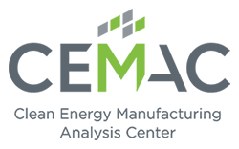Workforce Development Investment is a Win-Win for All
December 7, 2016
By Heather Head and Chuck Kurnik, NREL

Over two million people in the United States were employed, in whole or in part, by the clean energy industry in 2015.1 Transitioning to a new clean energy economy requires investment in workforce development, as new technologies such as solar panels and wind turbines are manufactured, installed, and operated. Quality specialized training for skilled workforce performance is essential to meet the needs of clean energy industries and support communities in transition. Workforce development resources—in the form of competency-based credentials and training—benefits workers, businesses, and the economy. As new workers enter the workforce, and experienced workers make career transitions, competency-based workforce credentials can be a useful tool for both employers and employees.
An important step in creating a new workforce credential is identifying the tasks and competencies needed for the job. Luckily, excellent products have already been developed for the manufacturing sector, including competency models like those found on the Department of Labor's Competency Model Clearinghouse. Competency models can be used by employers when creating job descriptions, assessing job performance, or by educational institutions developing and standardizing trainers and training curriculum.
As defined on CareerOneStop.org, a competency is "the capability to apply or use a set of related knowledge, skills, and abilities required to successfully perform "critical work functions" or tasks in a defined work setting." Competency-based credentials demonstrate to potential employers that an applicant has the proper knowledge, skills, and abilities to do the job. Such credentials make workers more marketable.
Job competencies are typically described in a job task analysis (JTA) created by workers currently doing the job for which the credential is being developed. The JTA defines specific tasks needed by businesses and includes all of the tasks a worker is expected to perform, as well as the competencies required for each task. The JTA is then used by educational institutions to develop competency-based training programs that meet the needs of the industry and certifying bodies developing competency-based certification programs.
Not all credentials and trainings are created equal. Accredited training and certification programs guarantee that the training and credentials meet the needs of the industry. The conformity assessment ISO/IEC 17024:2012 is the most prominent government and industry-recognized standard for personnel certifications. These certifications have been developed by industry experts, and the organizations that offer these certifications have been audited by a third party to ensure quality and integrity of the certification. For example, NREL has developed workforce guidelines for the residential home performance industry to drive quality work, training, and business performance, while increasing energy savings and decreasing costs.
The U.S. Department of Energy's 2016 energy and employment report projected a hiring increase of 14 percent across the energy efficiency sector in 2016. As the manufacturing and deployment of clean energy technologies increases, so will the industry's workforce. These workforce development resources will continue to help businesses communicate the skills needed for quality workmanship and help workers understand what tasks and skills are necessary for effective job performance. Such investments can significantly improve productivity—with less time spent on labor transitions—as well as job performance, employee morale, and employment in the clean energy economy.

